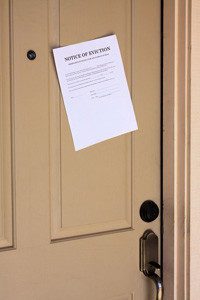Evict a Tenant – Filing the Eviction in Court
 Our blog contains helpful tips for landlords and the last few discussions have revolved around how to evict a tenant in Tampa. We have already discussed alternatives to eviction and how to prepare for an eviction. Today, we’ll talk about filing an eviction and then in part four, we will discuss what to do once you prevail in court.
Our blog contains helpful tips for landlords and the last few discussions have revolved around how to evict a tenant in Tampa. We have already discussed alternatives to eviction and how to prepare for an eviction. Today, we’ll talk about filing an eviction and then in part four, we will discuss what to do once you prevail in court.
There are two ways to file an eviction in Tampa.
-
Do it Yourself
This requires you to go to the country courthouse website, download all the forms, complete them, submit them to the court with the filing fees, and hire a process server so the tenant is served an eviction notice.
This is usually the most economical way to do it. However, there is always the concern that mistakes may be made or something may be missed.
-
Hire Someone
The second way to file an eviction is to hire an attorney or an eviction service to help you. There are plenty of them out there, and you would be able to easily find them on the Internet.
Once you file the eviction with the courthouse, you cannot accept rent from the tenant
If you accept rent, that stops the eviction process. So, if the tenant makes a partial payment in your office, return it. If they try to pay you, tell them to pay the court. Once an eviction starts, everything must happen through the courthouse.
Once the eviction is filed, if your tenant suddenly realizes that as a landlord, you are really serious about getting your money, they might contact you with an offer to completely catch up and pay everything they owe. At this point you can stop the eviction if you want to work out a plan for repayment. The way to do that is by filing a stipulation. A stipulation is a court approved payment plan which is signed by the judge. It has to be done through the court, and it says that the tenant needs to follow the payment plan and get all caught up with the rent that is owed to the landlord. If your tenant falls off the payment plan, you can restart the eviction from wherever it was stopped. There is no need to start the entire process over. This makes a stipulation an excellent vehicle for landlords and your tenants.
If you have any questions at all about the eviction process and how to get it through the courthouse, please do not hesitate to contact us at Hoffman Realty.
How To Evict A Tenant Series
1. How To Evict Tenants
2. Prepare for the Eviction
3. Filing the Eviction in Court
4. After You Prevail in Court
